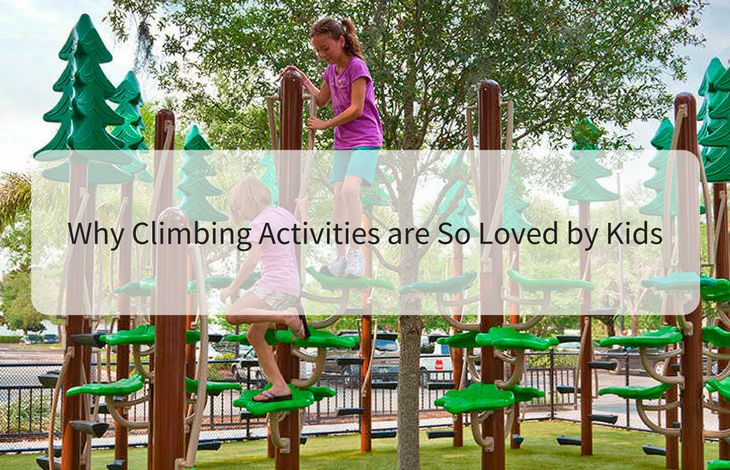Why Climbing Activities are So Loved by Kids

Grandparents (and some parents) love to say how today’s kids are weak. They call them pampered and spoiled because their noses are constantly stuck in electronics. Lots of little ones seem surgically glued to their smartphones and digital devices. Even the ones that aren’t are lost in the virtual worlds of Xbox and PlayStation. They rarely leave the house except to go play video games at someone else’s house.
This addiction to smart devices is starting earlier and earlier. Kids as young as a year old are already toying with their parents’ phones and tablets. But the war isn’t completely lost. While children are attached to their devices at home or in social settings, you’ll still find them playing analogue games at school.
In recess playgrounds, the most popular attractions are merry go rounds, jungle gyms, and rope play sets. Kids love to clamber all over these unstructured pieces of equipment. Even at home, if they’re given room to do so, your children will climb chairs, tables, ladders, staircases, counters, and anything else they can hoist their feet onto.
Children grow at astonishing rates. And their brains expand as much as their bodies do. But mental growth takes conscious effort. As they learn how to read, think, and speak, they have to work at it. Physical growth, on the other hand, takes no effort at all. It feels like a game. Every new physical challenge is just a new kind of play.
Kids enjoy stretching their muscles and figuring out new ways to surmount physical obstacles because it’s fun. And because motor skills are rarely explored in a formal setting, there’s no fear of failing. They don’t have to worry about disappointing teachers or parents if they don’t get it right. If anything, they will be rewarded by peers if they succeed.
When the average adult sees trees, walls, tables, ladders or swing ropes, all they see are hazards and danger. They would prefer it kids stayed far away from these devil devices, even if the alternative is a nice ‘safe’ TV show. But for kids, the physical play opens a whole world of imagination and adventure.
In addition to letting them exercise their arms and legs, overhanging ropes and heights are a chance to pump some adrenaline. They may not understand the science behind it, but even children feel the excitement and adrenal surge of jumping off an elevated platform. They enjoy the breath-taking views of treetops and the buzz of swift-moving air as they play on a slide or swing set.
The physical heights aren’t just stimulating at a sensory level. For kids, a rope set can be magically transformed into a military obstacle race. A tree can be a dragon tower. A swing can be a Tarzan vine. Sophisticated technological toys fill in all the details, but basic analogue play sets invite children to exercise their creative storytelling muscles.
These kinds of games also allow children to play out roles, since the games involve leaders, followers, princesses, warriors, heroes, and villains. It gives them a sense of autonomy and control that they rarely get from the adults in their lives. In a way, it’s probably why they seem drawn to the very games that adults ask them to avoid.
Psychologists say climbing engages all a child’s senses. The view stimulates their sight, rewarding them with exciting new perspectives. The action of climbing ropes and walls activates touch. The energy expended while climbing raises their heart rate, and they can sometimes ‘hear’ their heartbeat and ‘smell’ their own sweat and skin. They become hyper aware of themselves, which is beautifully stimulating. Plus, pushing boundaries and getting a rise out of adults offers its own kind of pleasure. At the most basic levels, children naturally climb to see what’s ‘up there’.
Instead of stifling a natural instinct and constantly fighting your kids, work with them. Provide a safe environment for them to climb in. For infants and toddlers, you can line the floor with cushions, pillows, and thick carpeting so that when the kids fall – and they will – they don’t hurt themselves.
For older kids, get them a safe play set that can still arouse their sense of adventure and ‘danger’. Rope sets and play towers are great, but make sure they’re put together by credible manufacturers. They should meet safety regulations, contain no toxic paints or corrosive parts, and have solid, smooth edges that can withstand the weight and rough handling of active youngsters.





